#Fitness Jackets Manufacturer
Explore tagged Tumblr posts
Text
MIKU JACKET IS ON THE WAY
#i soooo hope it fits 😭 according to the measurement chart a medium should fit well but it's been a while since i've worn a medium for-#-jackets sooo. please fit. PLEASE#last time i preordered this jacket the manufacturer didn't send them any mediums at all so i got something else and re-preordered 😔#so id be so so sad if it didn't fit after all this time HAHA#only real starsbits fans remember the miku jacket incident ‼️ /j#🪼
1 note
·
View note
Text
Why Buying Wholesale Gym Clothes, Beachwear, and Girls Dresses is a Wise Investment
Get wholesale clothes from the premier American-based wholesale clothing manufacturer. Offering a wide range of quality flannel, denim jackets, sportswear and children’s clothes in bulk, USA Clothing Manufacturer is your go-to source for all your bulk clothing needs!
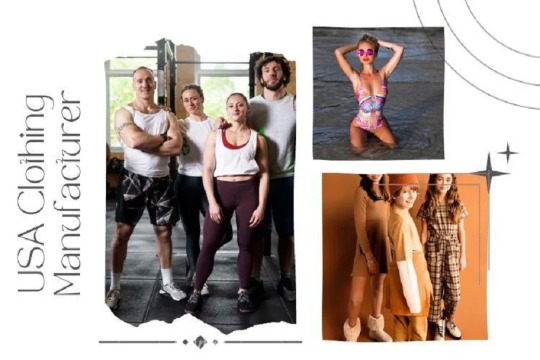
#Wholesale beachwear suppliers#wholesale girls’ dresses#wholesale gym clothes#gym wear wholesale#kids wholesale vendors#men's wholesale clothing distributors usa#USA clothing manufacturers#best private label clothing manufacturers#usa apparel manufacturers#clothing manufacters#clothing manufacturers in alabama#usa private label clothing manufacturers#dress shirt manufacturers in usa#clothing manufacturers united states#american clothes manufacturers#clothing line manufacturers usa#garment manufacturers in usa#fitness apparel manufacturers usa#dress manufacturers in usa#denim jacket manufacturers usa
0 notes
Note
Oh great Miku Missionary, are there any other figures which have the same energy/vibe as the Tokyo Otaku Mode LAM Rock Singer figure? I love her antennas and the confidence in the pose is amazing! Her fit is also so cute in a cool sorta way…does that make sense? I also love the mix of all those high energy greens and pinks which contrast against her hair and jacket, she’s just so cool!
I love that one so much........................she's an actual icon fr (╥﹏╥)
For the uninitiated:
For similar ones, both her sculptor and manufacturer don't have anything that's like her so I've gotta look outside of the box and do my best to find things that match her swag~
59 notes
·
View notes
Note
Oh my god, just had a light bulb moment…
I’m sure other people have possibly come to this conclusion too, but I think Meghan is so obsessed with making fetch happen - to the point of forcing people to say she’s not the monster we all know her to be - is because she is so deeply envious of how universally beloved Catherine is. It is organic and effortless and not manufactured or manipulated at all, and it must really trigger Meghan for some reason. IMO, this all stems from her insane deep seated jealousy and believing that it should actually be HER who is on a pedestal. I never realised the extent of how mad this truly drives Meghan (even though she is undeniably certifiable). She cannot stand that the world adores Catherine and rightly sees straight through her - and always has; so she is beyond obsessed with forcing this narrative even if it’s fake, contrived and an outright lie. Her SWF-like obsession with Kate is actually so scary and deranged. It all comes back to her creepy and completely delusional one sided competition… in her head only! That nutter is genuinely fit for a straight jacket. All Catherine does is simply exist and I feel like it makes Meghan mental because it is a constant reminder her of her complete and utter inadequacy. Thank god she’ll never be near The Wales again in any meaningful capacity!
Not to burst your bubble dear anon, but this is a fairly prevalent theory. Meghan is an egomaniac with an inferioty complex. She knows she can't live up to Catherine, hence the *points to everything that has transpired*
29 notes
·
View notes
Note
Hello! Maybe 🧶 : cozy and fox/rex for the prompts?
Wintertime prompts
Fox lets the needles clatter into his footlocker. Shoved into the back, beneath his polishing rags, behind his “loaned” HUD diagnostics kit. Long and lethal but entirely innocent; he just doesn’t want to have to answer any difficult questions.
The yarn is not pure and it’s not sustainable and it’s probably manufactured on Corellia and shipped however many thousand parsecs around the galaxy. It’s not all that soft, but nothing they’ve ever had is. Whatever. It was cheap. It’s all he can barter for. And it’s a deep, rich burgundy that reminds him of smoking embers and cadet uniforms and blood.
He isn’t even very good at making things. There are holes big enough to fit his fingers through from a dozen dropped stitches. The weave is a little uneven, the sleeves are on the skew, and the panels seem to get wider from shoulder to hip. The edge of the neck hole he made is rough; he doesn’t know how to make a collar.
It will do.
Rex is sitting in the underground tapcaf when Fox arrives, staring into space and ignoring the caf pot on the table. He was right—the jumper he wears now is fraying at every hem and thin and frumpy and even more holey than before. It looks well worn, worn out. Loved. Draughty. It’s even been singed.
Fox tosses the folded garment in his hand and it lands on Rex’s head, making him twitch and scowl and pull it down.
Fox admires how much he has improved since he first picked up a handcraft.
He can’t hide his smugness when Rex’s fingers run over the fresh yarn repetitively. Down each sleeve, across the back, along the hem, around the inside of the missing collar and into each cuff. Fox shoves his own hands in the pockets of a stolen civvie jacket, not bothering to pull down the mask over his mouth.
Rex’s hat is looking worse for wear. It looks like he picked it up off a street somewhere. Perhaps Christophsis. Maybe he can try to make one of those next.
“Thanks,” Rex tells him. He can’t hide his appreciation even if he doesn’t make eye contact. He’s clutching the fabric close even though Fox has no intention of taking it back. He probably doesn’t even realise he is.
Fox smiles and pours himself a mug of caf.
#HELLO IM BACK SORRY I’ve been in survival mode frfr#now these thoughts won’t leave me Alone#hope you enjoy!!#fox/rex#cloneshipping#writing tag#wintertime prompts
40 notes
·
View notes
Text
WW I Part II
Women's fashion has less ornament and detail. Pockets were stictched on the exterior of women's skirts and jackets instead of hidden in seams. Jackets were worn longer over the hips and looser fitting with belts wrapped around the waist. Women's waists were no longer emphasized as they had been with corsetted dress. Women's skirts were shorter and showed their shoes.

Suits by Chanel in silk and wool jersey.
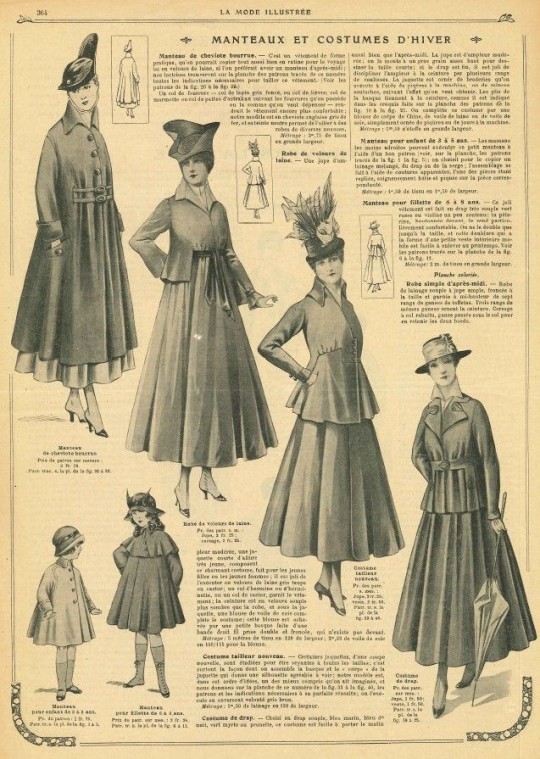
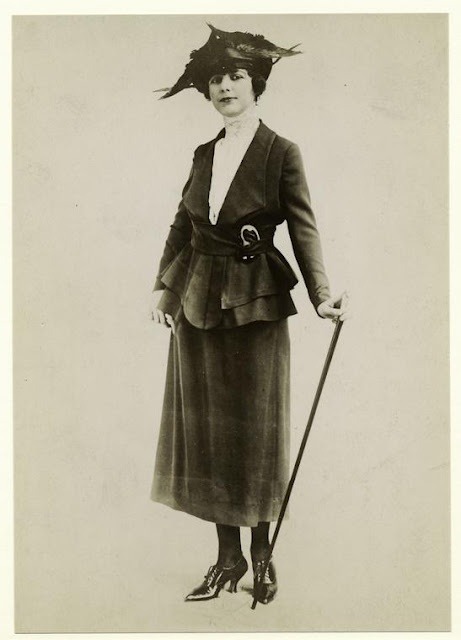
La Mode Illustrée, October 8, 1916 | Woman's suit • 1918
Though we don't think of haute couture and war as having anything in common, in France the manufacturing and export of fashionable clothing for women helped to keep the economy going during World War I.

Fashion Plate for the French magazine Les Elegances Parisienne • 1916

While Coco Chanel got her start during the great war, it was Paul Poiret who was the star of the era's high fashion. Referred to as the King of Fashion in America in the 1910s, Poiret is most famous for his designs influenced by Orientalism, Neoclassicism, and Surrealism; the kimono, the Turkish trouser, the slit skirt, and the famous lampshade dress. Mostly, he is remembered for his stance on women’s fashon and the simplification of the female silhouette. He dismissed the petticoat and the corset, as the trends shifted away from tailoring toward draping. He disliked the word fashion, opting instead to design women’s clothing solely as an expression of individuality. “Women are wrong for following one style,” he said.

Paul Poiret's "lampshade" fashions


Chanel photos. The one on the right was taken in front of her first boutique in 1914.
#fashion history#women's fashion history#ww 1 fashion#chanel#paul poiret#the resplendent outfit fashion/art blog#vintage fashion photos#the lampshade dress#1910s fashion catalog#1910s fashion plates
46 notes
·
View notes
Text
𝟑 𝐀𝐌 𝐒𝐡𝐞𝐧𝐚𝐧𝐢𝐠𝐚𝐧𝐬 𝐢𝐧 𝐓𝐞𝐫𝐦𝐢𝐧𝐚𝐥 𝐁
Summary:Two grown men stuck in an airport at 3 AM decide that the only logical way to pass time is by committing fashion crimes in the duty-free store. Chaos, questionable life choices, and a near-ban from Terminal B ensue.
WC: 1.2 K. Read On AO3 or below the cut.
For 31 Days Of Tamcien, Prompt - Day 22 Stuck in an airport at 3am AU.
. . .
Airports at 3 AM were not designed for human survival. They were purgatories disguised as places of transit—sterile, soulless, and illuminated by artificial lighting that buzzed with the smug indifference of the eternally awake.
Tamlin, sitting stiffly in one of the least comfortable chairs ever manufactured, had resigned himself to misery. Their flight was delayed indefinitely due to what the bored voice over the intercom had called “operational challenges.” The phrase meant nothing, but it had efficiently crushed his last remaining shred of hope.
Lucien, on the other hand, seemed to be thriving on the chaos.
“This,” Lucien announced, stretching his legs across two seats, “is a test of our willpower. A battle against the forces of bureaucracy and fate itself.”
Tamlin exhaled sharply. “It’s just a flight delay.”
“Oh, is it?” Lucien tapped his chin. “You say that now, but what happens in another hour? Another two? Despair sets in. Madness takes root. We’ll start questioning reality. Who’s to say we ever even had a flight? Maybe this has all been a lie.”
Tamlin, who had spent the past forty-five minutes staring at the vending machine contemplating whether a $6 granola bar was worth selling his soul, did not appreciate the theatrics. “We’re not descending into madness. We’re just bored.”
“Exactly,” Lucien declared, sitting up suddenly. “Which is why we need entertainment. And since I don’t see a live orchestra conveniently stationed in the middle of Terminal B, we’re going to have to create our own fun.”
Tamlin sighed, already bracing for whatever nonsense Lucien was about to suggest.
Lucien stood, stretched, and gestured toward the glossy duty-free store, its pristine displays glittering under the fluorescent lights. “We,” he said with the gravity of a man about to propose a military campaign, “are going in.”
Tamlin frowned. “Going in where?”
“The store.”
“For what?”
Lucien’s grin was positively wicked. “We’re trying on the most ridiculous outfits we can find.”
Tamlin groaned, running a hand down his face. “Lucien, that’s—”
“Genius? I know.”
“I was going to say immature.”
“That too.” Lucien shrugged. “But look around you, Tam. We’re trapped in a liminal void. Time doesn’t exist here. There are no consequences. We must seize the moment before we start contemplating our mortality again.”
“I wasn’t contemplating my mortality.”
Lucien arched a brow. “Oh? So the six-minute-long staring contest you had with the vending machine was just for fun?”
Tamlin glared. Lucien grinned.
Tamlin exhaled. “Fine.”
And so it began.
Lucien, as always, threw himself into the endeavor with reckless enthusiasm. He vanished into the aisles, only to emerge minutes later wearing a blindingly loud floral suit in shades of fuchsia, emerald, and some deeply offensive shade of orange. A pair of oversized sunglasses perched on his nose, and in one hand, he held a designer handbag that he swung dramatically over his shoulder.
“I call this rich divorcée who just got custody of the yacht,” he announced, striking a pose.
Tamlin, despite himself, let out a short laugh. “You look ridiculous.”
“I look expensive,” Lucien corrected, adjusting the sunglasses. “Your turn.”
Tamlin, with great reluctance, allowed himself to be shoved toward the racks. He grabbed the first things within reach and disappeared into the fitting room. When he stepped out, Lucien let out an audible gasp.
“Oh my gods,” Lucien whispered, clutching his chest. “You look like a midlife crisis on legs.”
Tamlin scowled. He had somehow ended up in a tight leather jacket, ripped jeans that looked like they had been personally attacked by a knife-wielding maniac, and a pair of aviators.
“You’re one to talk, Mrs. Yacht,” Tamlin muttered.
Lucien beamed. “Oh, this is going to be fun.”
And it was.
It spiraled quickly. Lucien, in his quest for aesthetic chaos, made it his mission to push Tamlin into increasingly absurd outfits. Tamlin endured an offensively sequined blazer (“You look like a Vegas magician”), an oversized fur coat (“Ah yes, wealth”), and, at one point, an airport pilot uniform.
Lucien nearly doubled over with laughter when Tamlin stepped out in the crisp navy-blue jacket and hat. “Welcome aboard,” Lucien intoned in a mock-serious voice. “This is your captain speaking—our flight is still delayed. Please scream into the void.”
Tamlin yanked off the hat and threw it at him.
Lucien caught it and placed it on his own head, striking a dramatic pose. “You know, I think I was meant for a life in aviation.”
“You don’t even know how to drive a car.”
“Which makes this all the more thrilling.”
At some point, security started watching them with a sort of exhausted resignation. A store employee cleared their throat meaningfully when Lucien attempted to try on a third fur coat, but they hadn’t yet been kicked out.
“I give it another ten minutes before they call someone,” Tamlin muttered as they swapped their latest selections for something new.
“Then we have ten minutes to make the most of it,” Lucien declared.
Tamlin rolled his eyes but couldn’t quite smother the small smile threatening to break through.
Lucien returned in a full-length trench coat, his hair mussed as he adjusted the collar dramatically. “Do I look like I run a secret underground empire?”
Tamlin, suppressing laughter, nodded solemnly. “Very menacing.”
Lucien flourished the coat dramatically before eyeing Tamlin with a slow, assessing look. “Alright. One last one.”
Tamlin narrowed his eyes. “I don’t trust that tone.”
“You shouldn’t,” Lucien admitted.
Minutes later, Tamlin emerged in what might have been the worst ensemble yet: a designer tracksuit in a shade of neon green so offensive it could probably be seen from space. Lucien, upon seeing him, immediately collapsed into a chair, laughing so hard he nearly fell off.
“Oh, Tamlin,” Lucien wheezed. “You look like an Eastern European mobster who launders money through a nightclub.”
Tamlin crossed his arms. “You’re the one who picked it.”
“Yes, and I regret nothing.” Lucien wiped a tear from his eye. “Alright, we should stop before we actually get banned from this place.”
With great reluctance, they returned their ridiculous selections, changing back into their own, much more boring, clothes. As they left the store, a security guard gave them the kind of exhausted look usually reserved for parents of particularly hyperactive children.
Lucien stretched, a satisfied grin on his face. “Well, that killed some time.”
Tamlin shook his head. “You’re impossible.”
“I know.” Lucien bumped their shoulders together lightly. “But admit it, you had fun.”
Tamlin hesitated, then sighed. “Maybe.”
Lucien’s grin widened. “Good. Now, since we’re on a streak of questionable decision-making—wanna go find out if the baggage carousels are fun to ride?”
Tamlin groaned. “Lucien.”
“What?”
“…Lead the way.”
And so, in the liminal, fluorescent-lit purgatory of Terminal B, Tamlin and Lucien continued their descent into airport-induced madness, killing time with sheer, unrepentant chaos.
Somewhere, their flight remained delayed.
But at 3 AM, in a world where time seemed to stand still, that hardly mattered.
. . .
- @sonics-atelier 2025 ( do not repost or reuse in any way, shape or form )
#pro tamcien#pro tamlin#pro lucien vanserra#pro lucien#lucien x tamlin#tamlin x lucien#tamlin acotar#tamlin#tamlin deserves better#lucien deserves better#lucien vanserra#lucien vandaddy#lucien#lucien acotar#a court of thorns and roses#tamcien fanfiction#tamcien fanfic#tamcien#tamcien moodboard#tamcien poetry#acotar#sjm#gay ships#autumn court#spring court#my writing#queer#31daysoftamcien#acotar smut#acotar fanfiction
13 notes
·
View notes
Text


Joseph Quinn is wearing Tony Wack's Distressed Mechanic Jacket in Faded Beige
PRICE: £130/$167
ADDITIONAL INFORMATION
This jacket is made of high-density 100% cotton fabric. After garment dyeing, partial fading out and damage washing were added, creating an attractive vintage-looking faded color and puckering. This item can be styled in various ways using a two-way zipper.
This product is finished through garment dyeing, which involves dyeing the finished product so that you can feel the vintage color and texture of both the fabric and the accessories. Due to the nature of the process, natural fading and peeling may appear on the zipper, buttons, etc., but this is a unique characteristic of the product that reflects the manufacturing intention, and has been manufactured so that it is not uncomfortable to wear.
FEATURE
•Regular Fit
•spread collar
•Zip closure
•Two Front Pocket
•Buttoned cuffs
•Cinch tabs at side seams
9 notes
·
View notes
Text
Too warm with a jacket on but too cold without it? Athletic apparel brands boast temperature-controlling fabrics that adapt to every climate with lightweight but warm products. Yet, consider a fabric that you can adjust to fit your specific temperature needs. Inspired by the dynamic color-changing properties of squid skin, researchers from the University of California, Irvine developed a method to manufacture a heat-adjusting material that is breathable and washable and can be integrated into flexible fabric. They published their proof-of-concept for the advanced bioinspired composites in APL Bioengineering, by AIP Publishing. "Squid skin is complex, consisting of multiple layers that work together to manipulate light and change the animal's overall coloration and patterning," said author Alon Gorodetsky. "Some of the layers contain organs called chromatophores, which transition between expanded and contracted states (upon muscle action) to change how the skin transmits and reflects visible light."
Read more.
19 notes
·
View notes
Note
Ok but I would love to hear about your tailoring? That’s amazing, speak to me of the soutache! Do you have opinions on thimbles?!
Sorry for taking so long to reply. But I just finished the first sample (of two) of what I will be sewing during my journeyman exam in June and am really excited about that, so now seems like a fitting occasion since it's the source of my soutache themed dreams (thankfully not yet nightmares, but I have been dreaming an awful lot about sewing and class). Prepare for a barely filtered infodump. Here, the finished sample:




(The buttons are temporary, I just didn't have anything else. I am either going with black ones or do fabric covered buttons myself. I also hate how I ended the soutache on the back of the yoke. It should continue into the seam of the zipper so it's continuous. I don't know what I was thinking with ending it abruptly.)
Opinions on thimbles... Use them! I didn't until I started my apprenticeship and I've been converted. I don't have the typical metal cone ones but this one by Prym, I don't find the other ones comfortable. But Clover has an interesting metal one I'd like to try, partially because it makes me think of medieval armour. Leather thimbles also seem to me popular because they aren't that rigid and can be made yourself. And did you know sashiko thimbles are a thing? They cover the part below the middle finger since the motion during stitching is quite different and the fabric is gathered onto the needle which is then pushed by your palm and not just your finger. Now onto the soutache. If you don't know what it is: it's a braid made out of threads that are woven and braided around two cords.
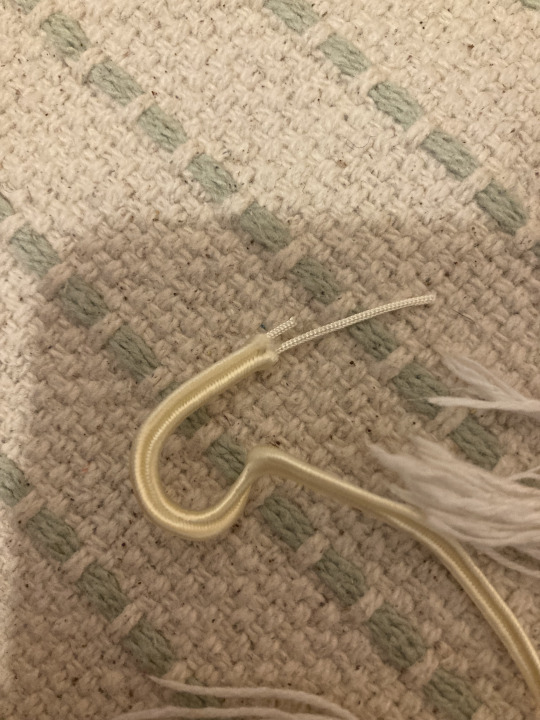
Nowadays made out of synthetic filaments (viscose, polyester) but I've also found a German manufacturer of cotton and linen soutache. For the journeyman exam we need to make a combination of skirt, dress or trousers and coat or blazer. Skirt and blazer is what most do and is what requires less time. We have five days (40 hours) during which we have to do all the sewing and also cutting out fabric for the lining, so everything that's done after the first fitting. And part of that is a decorative element of our own choosing, which needs to fill 8 hours. It can be embroidery, appliqué pleats, ruffles, beading, rouleaux trim, pleating and so on. Stupid me decided to do soutache. Because I've wanted to try it for years and been admiring it on garments from second half of the 19th and early 20th century during which it was really popular. Nowadays it can be most often found on uniforms and costumes.
This is my inspiration:
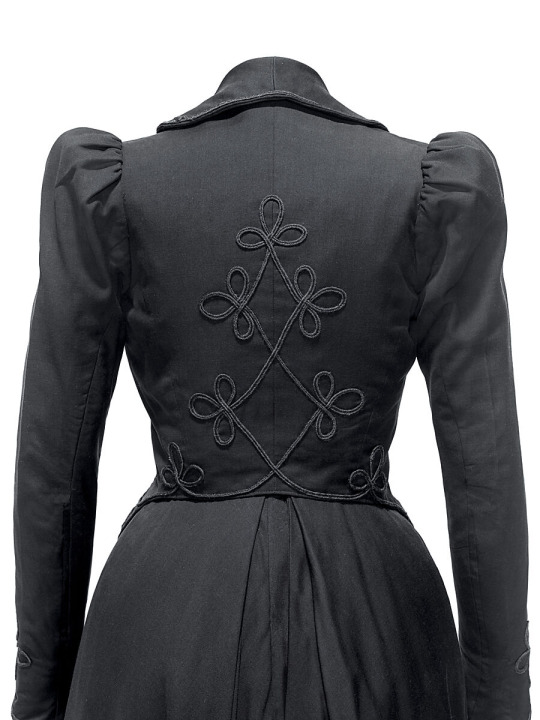
Actually buying soutache, good quality soutache, is the first hurdle. I've gathered a wide arrange of braid from all over but not all is suitable to my needs. I wouldn't have thought before but the braid needs to be rather firm for a nice, even result without turning out wonky, especially with curved lines. Of which I have many. Sewing braid on fabric sounds deceivingly easy. And in theory it is, but getting it just right (especially with something that requires symmetry) is a headache. And a lot of it already comes down to how you transfer the pattern onto your fabric. One way is to trace the pattern on thin, to pin it to your fabric and then to sew along the traced lines. Tear away the paper and you're left with a pattern of stitches to follow.


But placing that paper just right, especially across seams that are not forgiving when it comes to symmetry. The paper slips and especially the curved lines are super difficult to sew along and turns out wonky more often than I'd like. It's easier to follow the curves when applying the soutache actually, I have more control. I used this method for the soutache on the back of the jacket and while I am happy with it, even if it isn't perfect, I doubt it would suffice for my exam. I am going to go with a smaller design and also one where the bows only go across one seam. Knowing this, I chose a fusible interfacing for the skirt yoke that I could draw on, much easier, and much more accurate even if the braid itself isn't always even in the end. Not done by a machine after all.

wrong side of the yoke, the blue is water soluble pen, and then one line of stitching to transfer the pattern to the right side and one of applying the braid
There are presser feet for applying braid but while they help with not having to hold the braid, the foot itself covers the lines I want to follow. Great for relatively straight lines but not an option for the bows. There is an attachment called an underbraider that was made for old domestic machines. They allow you to sew with the wrong side facing up while the braid is attached to the right side. But I haven't been able to figure out what it's called in German and if I can buy one somewhere. But I do have an antique singer it could be used with. For the details around the slits in the sleeves I've tried yet another method and shaped the bows beforehand and then basted them onto the fabric. It's good for such small designs, and especially that specific area because of the challenges the seam allowances and the underside of the slit presents, which can't be caught in the stitching and the stitching has to be hidden by the lining later on. Still a bit trial and error.



An issue with this particular soutache braid is that the cords at its core don't match the outside, they are white! And sometimes they show, which is rather unsightly. So not an option for my exam.

The one that's perfect in terms of firmness and actually has the the same coloured cords (the yellowish one above) is no longer being produced and the remaining colours don't fit my fabric.
I bought enough fabric for two suits out of the blue and one out of the red and wanted to use the blue fabric for my exam but given the soutache braid issues, I am considering going with red fabric and blue soutache (if I have enough meters, I need to measure). I think that combination is lovely.

I am also considering going with a different skirt pattern. I like it by itself but not as an ensemble. It's too flowy due to the bias cut and doesn't go well with the firmer lines of the blazer, I think. But given the poofy sleeves, I think the skirt has to be flared or be much shorter, a mini skirt, and close fitting. And as it is, the jacket covers the top of the design on the yoke. But that's why it's the first sample of two I am going to sew before the final exam. Also, let me take the opportunity to show off the rather neat buttonholes I stitched today.

Also, while I am already rambling about my sewing: I love sewing by hand and I especially love slip stitching (and I am really good at it). I'd happily be the person always doing the slip stitching for everyone. We have the option of inserting the entire jacket lining by hand or just do the sleeve and jacket hems by hand and attach the lining to the facing by machine. I hope I can make it work time wise and do it by hand.


And tagging @whirling-ghost because you are always on the receiving end of my sewing related rambles (and plenty of the other ones too and have been for years). You're the best! <3
#idk is this the kind of talking abotu my tailoring that's interesting to you? 🙈#i've definitely spoke of the soutache to you :D but i don't know what anything of this says to anybody else who hasn't been thinking about#this obsessively for months#everyone seems to have picked an easier decorative element#our instructors keep an eye on who they think can handle what and they haven't told me not to. so i am good (for now) :D#but i wouldn't recommend it.#but i also couldn't find any other inspiration and i really really love soutache.#and I'd been admiring the extant garment from the met for ages#and it's fun! it's a challenge and all of the above is still practice but i still love how it turned out#and if it were for a personal project i'd be very satisfied even with the wonky bits#i need to ger ready for sleep and i don't have time to proof read. once i start i won't stop but also all mistakes will haunt me#i hope it isn't too bad.#meins#mightymightygnomepriest
9 notes
·
View notes
Text

Tactical Machine Pistol + Pose Pack
DOWNLOAD
Greetings, Customer! In this beautiful day before Christmas I'd like to Presenting you some Good Old Machine Pistol that you folks might Recognized it From Resident Evil 4!! Yay! this also Include The Pose Pack For these Guns :D Yay You Guys Gonna Love this @melbrewer367, @helenofsimblr @bdangkingfish & @igglemouse @exzentra-reblog
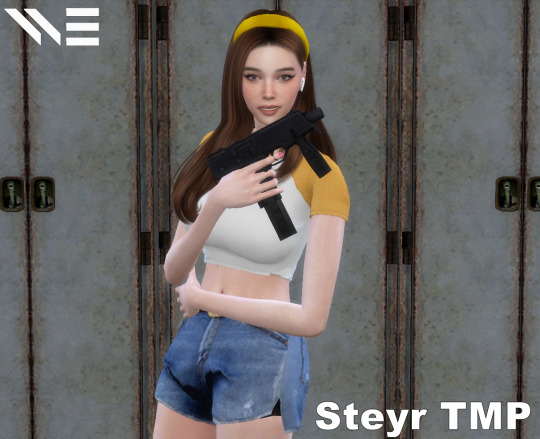
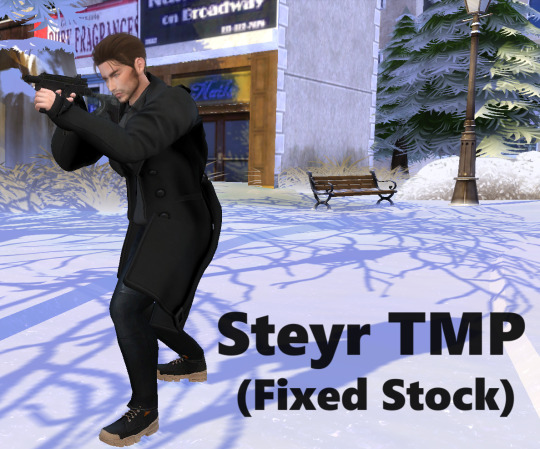
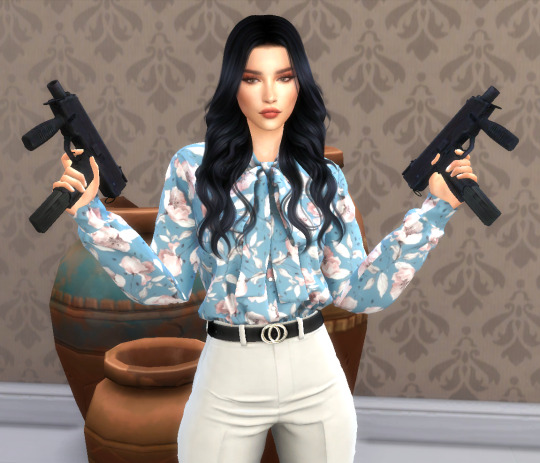
Steyr TMP
The Steyr TMP (Taktische Maschinenpistole/Tactical Machine Pistol) is a 9×19mm Parabellum caliber machine pistol manufactured by Steyr Mannlicher of Austria. The magazines come in 15 or 30 round detachable box types. A suppressor can also be fitted. Though originally intended to be used without a shoulder stock, an optional fixed stock was made available later.
Picture this: it's compact, it's sleek, and it's made by Steyr Mannlicher – those Austrians sure know how to craft some serious firepower. The mags? You've got options, my friend ��� choose between the 15-round or the 30-round detachable box types. More bullets, more fun, right?
Now, here's the cool part – you can throw a suppressor on this bad boy. Yeah, you heard me right. Stealth mode engaged! Take out the trash without waking up the whole neighborhood.
And get this, it was originally meant to be a hip-firing, no-shoulder-stock-needed kind of deal. But hey, if you're feeling fancy, they later dropped an optional fixed stock. So, whether you're going for the "I'm a secret agent" look or just want a compact powerhouse, the Steyr TMP has your back.
In summary, it's Austrian, it's 9mm, it's got optional Rambo vibes with that stock, and it's perfect for when you need to make a statement – quietly or not, your choice!
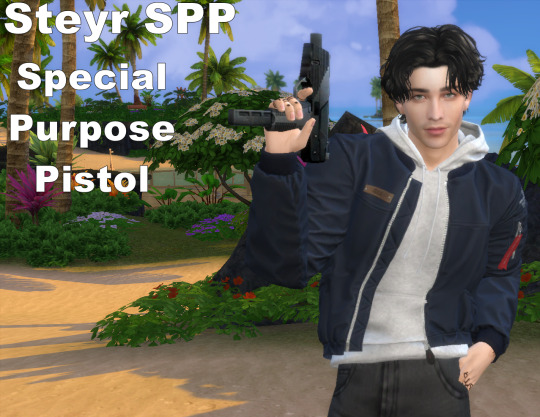
Steyr SPP
The Steyr SPP (Special Purpose Pistol) is a semi-automatic variant of the TMP intended for civilian Markets. The TMP's barrel and barrel jacket lengths were increased slightly so there is a greater length of protruding jacket and barrel. The forward tactical pistol grip was also removed. It is large for a pistol and is constructed mainly from Polyamide 66. Now, they didn't just slap on an "SPP" and call it a day. The SPP got a bit of a makeover. They tweaked the barrel and barrel jacket, making them a bit longer for that extra oomph. It's all about that protruding jacket and barrel, giving it a distinctive look. So, whether you're in the market for a semi-auto powerhouse or just want to feel like you're wielding the future of pistols, the Steyr SPP is your go-to. It's Austrian, it's purposeful, and it's packing some Polyamide 66 coolness. What more could you ask for in a Special Purpose Pistol?
Brügger & Thomet MP9


in 2001, Steyr decided to pass the torch, or in this case, the design, to none other than Brügger & Thomet. It's like a handoff in the world of guns – a bit like passing the baton in a relay race, but with more firepower.
So, Steyr handed over the blueprints, and Brügger & Thomet took the reins, turning that design into what we now know as the Brügger & Thomet MP9. It's like the TMP's legacy lives on, but with a Swiss twist.
Now, the MP9 isn't your average Joe submachine gun – it's got some serious selective-fire mojo going on. You can choose your flavor of firepower with 15, 20, 25, or 30 round transparent polymer magazines. It's like a buffet of bullets.
Safety first, right? The MP9 takes that seriously with not one, not two, but three safeties. You've got an ambidextrous safety/fire mode selector switch button for manual safety, a trigger safety, and a drop safety. They've basically built a fortress of safety around this thing.
And here's the kicker – it's the lovechild of the Steyr TMP. Brügger & Thomet took that TMP design, shook things up a bit, and voila, the MP9 was born. They made it even cooler with a folding stock that tucks away to the right, an integrated Picatinny rail for all your accessory needs, and a snazzy new trigger safety. Evolution at its finest, right?
So, whether you're into Swiss precision, sleek designs, or just want a submachine gun that's as safe as a bank vault, the MP9 is here to deliver the goods – with a little help from its TMP roots.

Brügger & Thomet TP9
So, check this out: the TP9, a semi-auto civilian version of the MP9, decided to play by the rules to cozy up with US firearm import laws. They did a little swap dance – out with the forward grip, in with a snazzy underbarrel MIL-STD-1913 Picatinny Rail, right in front of the trigger guard. It's like the gun got a tactical makeover to fit in.
Imagine it's the rebel cousin – looks like the Steyr SPP but with a twist. No more forward grip, just a slick rail. Gotta hand it to them for adapting and keeping it stylish. Guns with a touch of strategy, right?
Now The Best Part.. The Pose Pack!!! well It Contain 10 Poses 5 For Males And 5 Males 3 of them inspired from Resident Evil Thingy and Stockless Variants are Compactible with regular Pistols poses that scattered around tumblrs.. like @pandorassims4cc or @alunedesires (deactivated) and Well It also Included For Left Hand in Case You guys need dual Wield Weapons
Thank You @ts4-poses @littyfinds @cctreasuretrove @exzentra-reblog@sparkiekongreblogsstuff
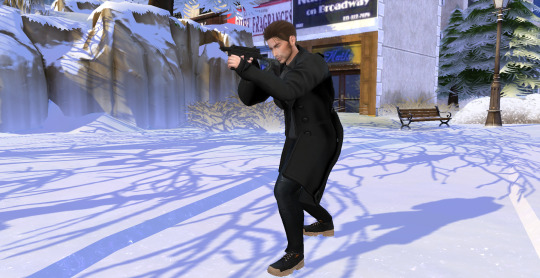
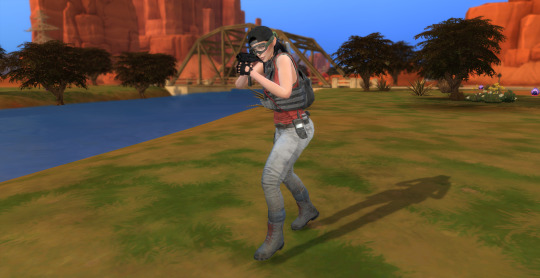
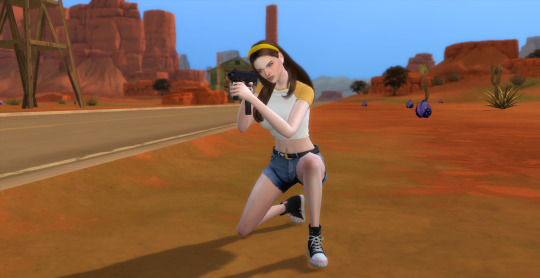
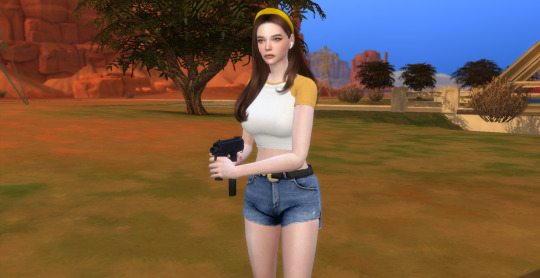

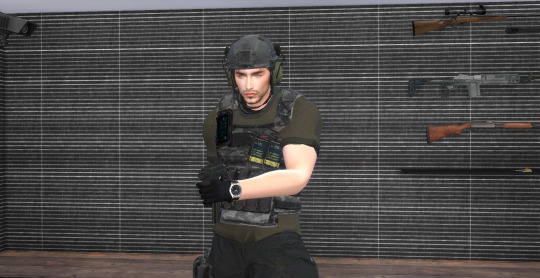


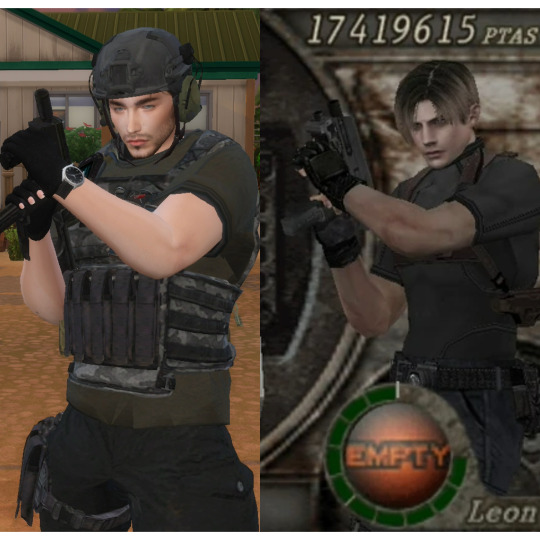
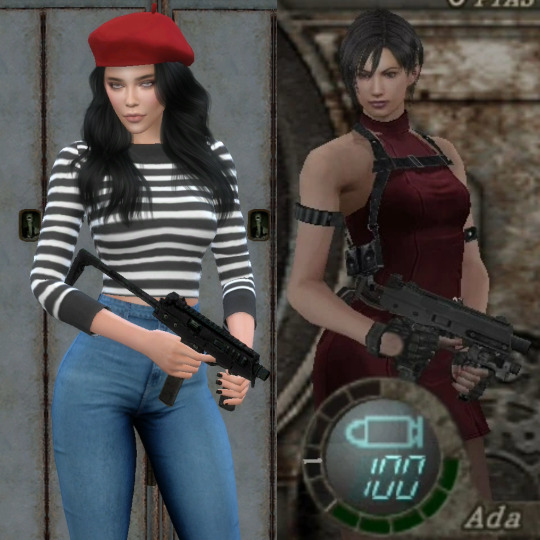
#the sims 4#the sims#the sims 4 custom content#ts4#ts4 cc#the sims 4 military#ts4military#the sim#the sims 4 cc#ts4cc#the sims 4 gun#ts4 gun#ts4 custom content#ts4 download#ts4 military#resident evil 4#re4 remake#resident evil 4 remake#re4#re4make#ada wong#leon kennedy#leon s kennedy#merchant services#the sims 4 pose#ts4 poses
69 notes
·
View notes
Text
Buy bulk USA made workout apparel and clothes from the number one clothing manufacturer in the US. USA Clothing Manufacturer offers high-quality products and reliable service to make sure your orders are fulfilled on time and with no issues. Visit us online now to get started!
#usa apparel manufacturers#usa private label clothing manufacturers#best private label clothing manufacturers#usa clothing manufacturers#dress shirt manufacturers in usa#clothing manufacturers united states#clothing manufacters#clothing manufacturers in alabama#clothing line manufacturers usa#clothing manufacturers in the USA#private label clothing manufacturer in the usa#custom clothing vendors#american clothes manufacturers#fitness apparel manufacturers usa#garment manufacturers in usa#dress manufacturers in usa#denim jacket manufacturers usa
0 notes
Text
The beginning

Louis Tomlinson x Fem!Oc
“In the space between hate and love, there’s a fire that refuses to be extinguished—one that burns brighter with every moment we try to deny it.”
Material List series material list
word count ; 977
════════════════════════════════════════
Tatum Vale was born in a quiet seaside town in Devon, where the cliffs met restless waves and life moved at a pace too slow for someone like her. Her parents, Sophie and Andrew Vale, were teachers—modest, practical, and fiercely supportive of their only daughter, even when she proved to be anything but conventional.
From a young age, Tatum had an unmistakable spark, a restless energy that didn't fit neatly into small-town expectations. While other kids were content building sandcastles or riding bikes through cobblestone streets, Tatum was perched on her windowsill, guitar in hand, scribbling down lyrics in a battered notebook. Her voice was raw but captivating, filled with emotion far beyond her years. Music wasn't just a hobby; it was her escape.
Her big break didn't happen overnight. At sixteen, armed with nothing but her guitar and a bus ticket, Tatum convinced her parents to let her travel to London for an open-mic night at a dingy pub in Camden. The crowd was small, uninterested—until she sang. Her voice, husky with a natural rasp, silenced the room. It wasn't polished, but it was authentic, and that was enough to catch the attention of a talent scout lurking at the back.
By seventeen, Tatum had signed a modest record deal. The early years were rough—grueling studio sessions, awkward interviews, and the relentless pressure to fit into a manufactured pop image that never suited her. The label wanted her to be polished, marketable, and uncontroversial. But Tatum was none of those things. She wore leather jackets instead of frilly dresses, wrote songs about heartbreak and defiance instead of clichés, and refused to plaster on a fake smile for anyone.
Her breakout single, Ghost Town, was raw and gritty, telling the story of love lost and lessons learned. It climbed the charts unexpectedly, cementing her as a rising star with a reputation for authenticity. Critics praised her vulnerability, comparing her to legendary singer-songwriters who had carved their paths without compromise.
But success came with a price. The media painted her as difficult—a "rebel without a cause" who clashed with executives and refused to conform. Fans, however, adored her for it. She became a voice for misfits, the girl who didn't bend to industry expectations.
As her fame grew, so did the scrutiny. Rumors swirled about her fiery temper and sharp tongue, particularly when it came to certain high-profile feuds. But Tatum didn't care. She wasn't in the business to make friends.
By 2013, she was headlining her own tours and collaborating with some of the biggest names in the industry. That was when her path crossed with One Direction—a pop powerhouse that represented everything she wasn't. Management had pushed for a collaboration, hoping to merge Tatum's edgy reputation with the boy band's clean-cut image. Tatum resisted at first, unwilling to compromise her sound. But in the end, curiosity and a desire to challenge herself won out.
Enter Louis Tomlinson: cocky, charismatic, and immediately infuriating. He embodied everything she claimed to despise—polished charm, media-trained smiles, and a frustrating tendency to always have the last word.
She'd met him before, back in the summer of 2011, during one of those chaotic festivals where artists crisscrossed backstage, schedules overlapped, and everyone shared the same stale coffee and frenzied atmosphere. One Direction had already skyrocketed to fame, their songs blaring from every corner of the festival grounds. Tatum, on the other hand, was a rising star just beginning to make waves with her raw, acoustic sound. The industry hadn't quite figured out what box to shove her into yet, and she liked it that way.
The first encounter was unremarkable — or at least, it should have been. Louis Tomlinson had sauntered up to her, his usual charming grin firmly in place. He exuded confidence, the kind that came naturally to someone used to being adored by millions.
"Hey," he greeted smoothly, hands tucked into the pockets of his skinny jeans. "Tatum Vale, right? Love that song of yours—what's it called? Ghost Town? Proper tune."
Tatum had barely looked up from her phone, offering only the most cursory glance in his direction. "Thanks," she muttered, her tone flat, dismissive.
Most people would've taken the hint and backed off. But Louis, evidently, wasn't most people.
"Big crowd out there," he continued, undeterred by her lack of enthusiasm. "Nervous?"
She finally met his gaze, eyes sharp and unyielding as if they were trying to tell him 'get away from me.'
"No."
The single syllable carried enough weight to shut down the conversation entirely. Louis blinked, clearly surprised by her frosty demeanor. His smile faltered for a split second before morphing into something more amused, as though he found her attitude intriguing rather than off-putting.
"Well, alright then," he said with a laugh, taking a step back. "Good chat."
She watched as he walked away, hands still stuffed in his pockets, that insufferable grin never quite leaving his face.
Later, she'd heard from one of the festival organizers that Louis had joked about their interaction, calling her "the most intimidating person I've ever met."
Tatum didn't care. She wasn't there to make friends, least of all with a boy band member who probably thought charm and a few compliments could win anyone over.
But that wasn't the last time they crossed paths. Over the years, there were brief encounters at award shows and industry events, always punctuated by the same dynamic—his relentless friendliness and her impenetrable indifference.
And yet, somehow, their paths always seemed to circle back to each other.
But despite the tension, there was no denying the chemistry, both musically and otherwise. Their collaboration produced a chart-topping hit, though the real headline was their public clashes. The press ate it up, dubbing them "the industry's most unlikely duo."
࿎࿎࿎࿎࿎
#louis tomlinson#harry styles#one direction#oc#oc x canon#niall horan#zayn malik#liam payne#enemies to lovers#slow burn#fanfic#one direction fanfiction#louis tomlinson x reader#𝙲𝚑𝚊𝚜𝚎 𝚘𝚏 𝚍𝚎𝚜𝚒𝚛𝚎
11 notes
·
View notes
Text
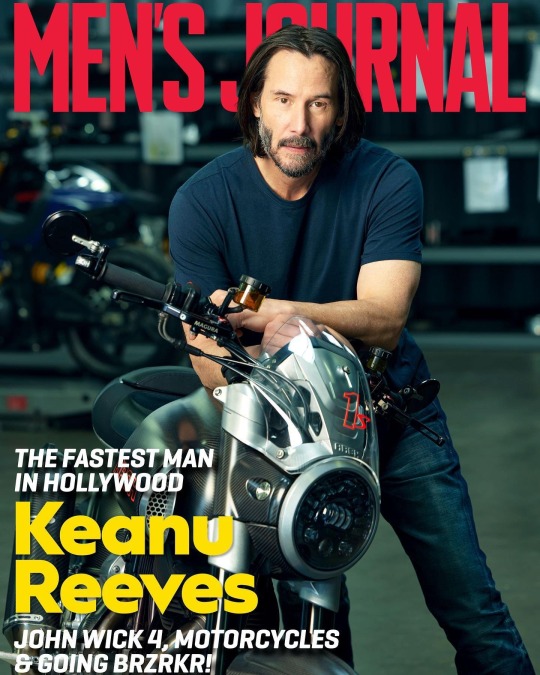
The Enduring Appeal of Keanu Reeves He battles evildoers in 'John Wick 4,' manufactures two-wheel pieces of art, and is worshiped by the internet, but Keanu Reeves swears he's just a normal guy. And he’s got the scars to prove it. Ky HendersonMar 15, 2023 9:00 AM EDT It’s easy to look cool when you’re riding a motorcycle, but it’s hard to look cooler than Keanu Reeves on a brisk, sunny afternoon in Los Angeles. He rests his left hand on his thigh and steers with his right, which gooses the throttle as he weaves around slow drivers. He wears a form-fitting black canvas motorcycle jacket that accentuates how trim he is—even more fit than he appears on-screen—and a beat-up Shoei helmet. He leaves the visor up, choosing instead to shield his eyes with sunglasses the Terminator might wear to a Hamptons garden party. Reeves looks at home and at ease on a motorcycle. He looks cool.
At a gas station stop, he suggests switching bikes. We’re each riding cruisers made by Arch, the motorcycle company Reeves co-founded with designer Gard Hollinger in 2011. The company produces high-end, highly personalized production bikes; I’m on a 1s, the company’s new $100,000+ sport cruiser. Reeves is on an older model, KRGT-1, but it’s his personal Arch, a true one-of-a-kind. It's the only Arch ever painted YK Blue, a color Reeves and Hollinger commissioned based on the ultramarine pigment famously mixed by mid-century French artist Yves Klein. Reeves says all that’s left of the paint is in a tiny can stored somewhere at Arch in case the bike’s paint ever needs touch-ups.
Which it most certainly would if, let’s say, some idiot were to put the bike down in front of a horrified Reeves while riding down the Pacific Coast Highway. Thankfully, there’ll be no lowsides today. Although the bike is beefy, with a 2,032cc V-twin powerplant, it’s easy to maneuver and comfy as a BarcaLounger.
Keanu Reeves stands in motorcycle factory holding blue mug Brian Bowen Smith
Reeves eventually leads us back to Arch’s factory building, which is nondescript from the outside but artfully decorated inside using shipping containers to separate working areas. Metal fabrication is done behind one; customer bikes are lined up in another with technicians hard at work. After Reeves dips outside for a cigarette—the 58-year-old both looks like a much younger man and smokes with the frequent abandon of one—he leads us to a small conference room.
“I like meeting people, but I’m a little reserved,” he warns as he settles into an office chair, looking far less comfortable than he did on a motorcycle. “How much of my private life do I want to talk about? I don’t know. Otherwise, let’s hang out.”
When Reeves was growing up in the Yorkville neighborhood of Toronto, he was consumed with existential thoughts. He discussed death a lot more than the average 11-year-old, for instance—but not because he wanted to die. He just wanted answers to big questions. Perhaps not entirely unrelated to his interest in mortality, he was also obsessed with the biker gangs that periodically motored into the neighborhood. It wasn't pods of dentists letting loose on weekends. It was leathers, patches, menace—the whole deal. And Reeves loved it.
“They looked exotic,” Reeves says. "They looked to me like they were free. Plus the bikes were cool and sounded great.”
Despite his childhood fascination, Reeves was in his early 20s before he first rode a motorcycle. It happened at a movie studio in Berlin—where else?—when he saw a woman on an off-road enduro bike in a parking lot. He approached her and asked if she’d teach him to ride, which she agreed to on the spot. (If you’re wondering why a woman would do that for a total stranger, search “Keanu Reeves in the 80s” in Google Images.)
Not long after he got back to Los Angeles, he bought a 1973 Mk2a Norton Commando, having long admired the classic brand. That bike currently sits in the Arch shop, which is notable for two reasons: One, few longtime riders are lucky enough to be able to hold onto their first bike. Two, over the years Reeves has…suffered some mishaps.
“Yeah, I’ve fallen off a few times,” he admits of the accidents he’s had on a variety of bikes. He takes a swig of water, then corrects himself. “Not ‘fallen off.’ Crashed. I’ve got a couple of hit-by-cars. A couple of going-too-fast. I’ve laid a couple of bikes down but I was riding in the winter, so that’s not really ‘crashing.’ That’s about it. The usual stuff.”
He’s broken ribs, knocked out teeth, sliced his leg open so deep that bone was visible. His most spectacular accident occurred in 1988, only a couple years after that day in Berlin. Reeves was riding alone at night in Malibu’s Topanga Canyon when he took one of the twisties too fast. By the time he came to a stop, he was lying on the pavement wondering if he was about to die. As you know, he didn’t—but he did fuck himself up pretty bad.
“I ruptured my spleen,” he says matter-of-factly. The widely reported version of the story goes that he needed the organ removed, but Reeves says it’s still intact. “They sutured it up and put a Band-Aid on.” He has a gnarly scar running vertically from his sternum down to his belly button, but in the right light it just ends up accentuating his abs because, well, he’s Keanu.
Reeves first met Hollinger through a mutual acquaintance about two decades after that crash, when Reeves wanted a custom sissy bar—basically, a backrest for a passenger—added to his 2005 Harley Davidson Dyna. Hollinger, who at that point was a relatively well-known, well-respected customizer with his own small LA shop, wasn’t interested.
“I knew I could build him the world’s most expensive sissy bar,” Hollinger says, “but I also knew it wouldn’t be satisfying for either of us.”
Instead, Hollinger spent the next five years completely reimagining the bike. He’d work in spurts, changing or adding something, then handing the bike back over to Reeves for months. By the time the bike was finished, Hollinger says, about the only parts of the original Dyna still remaining were the engine and the serial number on the chassis. Today that bike—a chromed-out ride fit for Mad Max—is displayed in the shop, the inspiration for what eventually became Arch.
Keanu Reeves on motorcycle wearing black canvas jacket and sunglasses Brian Bowen Smith
Eventually being the key word. When, during the long process of modding the bike, Reeves first suggested to Hollinger that the two team up to start a motorcycle company, Hollinger didn’t have to think about his answer.
“I knew what a tough business it is, what a challenge it would be—and that it would not be a great investment,” Hollinger, now 63, says with a laugh. “It was a wonderful motorcycle I built and it was wonderful getting to know Keanu, but starting a motorcycle company sounded like a horrible idea.”
Reeves didn’t relent. As the pair became better friends—and as the motorcycle continued to take shape—they’d have long conversations about the realities of starting the company. Hollinger would show up to their discussions with pages of questions written on a legal pad, but what gradually eroded his hesitation was the thoughtfulness with which Reeves described the experience of riding a motorcycle.
Finally, nearly convinced, Hollinger asked Reeves to boil everything down to one reason why they should do something as seemingly crazy as starting a motorcycle company. The actor came up with it on the spot—a reason Hollinger immediately understood, which allowed him to envision the company and its worth as an opportunity to do something meaningful and long-lasting.
“Because,” Reeves told him, channeling the mortality-obsessed 11-year-old kid gawking at dudes on motorcycles, “we’re going to die.”
Related: 2023 Arch 1s Sport Cruiser Is the American (V-twin) Dream
There have been many jokes made over the years about Reeves being a dummy, but after spending about 8 seconds with the guy it’s obvious he’s keenly intelligent. I mention that I read lots of sci-fi and fantasy books as a kid, which prompts him to ask whether I have opinions on several titles, followed by recommendations to read several others.
Thing is, his idiosyncratic public persona—which is sort of like Ted (not Bill) if Ted were a little more shy and a much better dresser—isn’t an act. Reeves isn’t trying to fool his critics or fans. And he isn’t really putting on an act in an attempt to prevent people from knowing who he is. He’s just this very singular, introspective, likable person who happened to become a pop culture icon.
All of that said? He can be pretty goofy. His physical mannerisms are sometimes at odds with what he’s saying, like he’s being controlled by feuding puppeteers. He speaks haltingly, stopping and starting and stopping again, often all in the same sentence, as he considers what exactly he wants to say or, just as likely, what he doesn’t want to say. More than once over the course of an afternoon he giggles—yes, giggles—at something he says or thinks, placing his cupped hand over his mouth like a theatrical school child hiding laughter; the gesture is as strange as it is endearing. He's somehow both laconic and verbose, calm and keyed up.
Although Reeves has long been known as “The internet’s boyfriend,” he’s currently dating—sorry, internet—acclaimed visual artist Alexandra Grant. The pair first collaborated on the 2011 book Ode to Happiness after having known each other previously; in the following years they collaborated on other projects and co-founded the small book imprint X Artists’ Books. Their romantic relationship began about five years ago but only became public knowledge two years in, when they arrived at a red carpet event together.
When asked about Grant, Reeves leans back in his chair as though trying to put both metaphorical and literal distance between himself and the idea of discussing his personal life.
So, uh, maybe it’s best to make it about bikes: What’s Grant’s opinion of Reeves’ (occasionally injurious) motorcycle fixation?
“She used to have a motorcycle, so she’s fine with it,” Reeves says. Then he pauses, as he so often does, seemingly considering whether to say anything more. “She hasn’t ridden in a while.”
Despite his lifelong love of bikes, Reeves hasn’t ridden them much in his movies. There’s a brief scene in the landmark 1991 indie film My Own Private Idaho. There’s some riding in 1996’s Chain Reaction, including one scene in which he manages to outrun an exploding hydrogen reactor. He’s technically on a bike in John Wick 3 while battling bad guys, but that was all done while stationary in front of a green screen. He has no interest in shoehorning Arches into his movies, though a couple of Arches are featured in the futuristic 2020 video game Cyberpunk 2077, in which he also played a major role.
Reeves says there’s a brief motorcycle scene in the upcoming John Wick 4, a movie whose eventual existence might have been laughed at when the original film debuted. Despite the series’ current status as an unstoppable franchise juggernaut, it originally wasn’t even planned as a franchise—and it certainly didn’t appear destined to be one after John Wick received a somewhat tepid theatrical reception in 2014.
“It had some success in the theater, but it really became more popular in second viewings,” Reeves says. “So the studio asked if we wanted to do another one.”
Reeves does more than just kick unbelievable amounts of ass in the movies; he’s also had a hand in plotting out the sequels. The genesis of the third and fourth installments, he says, took place while he and director Chad Stahelski were on the road promoting the second and third movies, respectively.
“Generally, Chad and I cook ’em up while we’re doing press tours,” Reeves says. “We talk about what we’d do next if the current film does well. I’m like, ‘I want to ride a horse and do a horse chase!’ And Chad says, ‘Yeah, we can do it in Central Park!’”
Reeves says he doesn’t know what comes next for him, but John Wick 5 will almost certainly be an option—if he wants to do it. He’s currently developing a TV series, and maybe he’ll make the motorcycle road movie he’s long thought about making. He’ll also no doubt continue riding bikes and growing Arch because he loves doing both.
He says he may continue BRZRKR, the comic series he co-writes. He won’t stop helping others via his philanthropy (he declines to discuss other than to say it’s “in health and the arts”). And he’ll burnish his already-glowing reputation as, in his words, “a pretty respectful and considerate person,” because that’s how he likes to treat people.
“I’m just,” Reeves says as his mouth curls into a smirk and his arms shoot out in front of him as though he’s pleading to be believed, “a normal guy.”
via keanuworld
161 notes
·
View notes
Note
Hi! this is a mainly DnD based question that sorta runs into Fable-
So I'm currently running an entirely underwater campaign! The species I've included is basically every aquatic DnD species (some with a few twists) along with some homebrewed underwater dragonborn, etc-
However, I'm having trouble with choosing a clothing type to put on the sea elves? My version has them more telchin-ish- aka, maybe funky colored human base with longer legs, a tail, and I've given them webbed, frog-like feet and fins in a variety of places.
Logically, they honestly really wouldn't wear clothes- but I'm not doing that because that'd make certain scenes very hard to draw-
so what do you generally imagine the telchin wearing? normal clothes, edited versions of those, etc? Right now I have the two sea elves my party interact with on a regular basis in sort of tank-top-esque wear and edited shorts of a kind.
:]
Ooooh okay that’s a really fun question my worldbuilding gears are turning lmao-
I have a post somewhere here on my blog about Telchin clothing and specifically my development of Ulysses design and the cultural influences, which basically boils down to “Telchins at the start of war = Ancient Greek clothes (chitons, togas, cloaks, etc). Telchins during the projects = WW2 fashion (pants, jumpsuits, jackets, etc)”
If you wanted my thoughts on how I would maybe clothe them in a broader sense/outside the context of Fable, I have some ideas! ✨
I think tank tops and shorts definitely fit the vibe. More-modern style clothing just underwater is always a super fun route to take, even for the visual of just clothing underwater being funky and something that’s a little different and new!
Typically in my mind, when it comes to clothing in world building it usually boils down to resources and purpose.
Resources is more the boring side of things. What kinds of materials do they have access to, how do they manufacture the clothing, blah blah blah. Not really something you need to worry about in fantasy worlds cause usually the answer is “cause magic” and “because it’s cool so I said so” which is the more fun kind of fantasy imo, and getting too bogged down in the granular details as a DM/storyteller just ain’t very productive.
Purpose on the other hand is where you can really have fun with underwater clothing! Is it designed to be functional, or stylistic? If its purpose is to be functional, maybe their clothing develops like swimsuits, almost? Like you said: shorts, crop tops, swim-shirts, etc! Something that covers enough or the body while still not being too cumbersome in the water, prioritizing movement when swimming! Or maybe you want to take that to the extreme; maybe their clothing developed like wetsuits! Skintight, smooth, shiny, and insulating! Designed to move with them, just a layer of covering for their bodies to make them more hydrodynamic! Or, if the purpose of the clothing is to be attractive and fashionable and flashy, maybe they do go in a more Greco-Roman route! Maybe it’s all about togas and dresses and cloaks and veils! Layers of long, flowing fabrics which shimmer and billow out in the water and draw attention to the person wearing them! These huge billowing clothes which make a statement, rather than help with movement or anything!
And it doesn’t have to be one or the other, either. You can mix and match both! Maybe the skintight wetsuit-like clothes are designed with patterns that ripple and shift as the wearer moves and they become beautiful and hypnotic! Maybe the large billowing cloaks are useful when avoiding predators underwater, making the wearer seem bigger, scarier and more imposing to any underwater monsters! The telchin’s clothing in my eyes follows a direct path almost: the fashionable pre-war clothing in billowing fabrics which allow freedom of movement and expression, that slowly transition into cleaner, more tailored clothing as they need to conserve fabric, and avoid being grabbed by drowned, losing that expression in the process. There’s so much room to play around with elements of either or both when it comes to it!
I know this was very rambling but I hope it was somewhat helpful!! Your campaign sounds really cool, an underwater campaign is such an interesting concept!! I hope you have fun running it!
27 notes
·
View notes
Text
HUgE Mar 2011
SWING in the AIR
Light fabric that dances in the breeze.
Spring coats dance beautifully in the gentle spring sunshine.

Gucci: This coat has an oversized silhouette, and the belt around the neck is an accent that makes it stand out. The bold design is made in earth colors, giving it an elegant look. ¥236,250 (Gucci Japan)
Lanvin: A hybrid design that mixes a mod coat with a rider's coat. The lightness of the techno fabric and the meticulous craftsmanship are very Lanvin-like. ¥211,050 (Lanvin Japan)

Raf Simons: White, which pays homage to Martin Margiela, is the key color for this spring and summer. The innovative design, such as the front loop and back zipper, is unique to Ruff. ¥254,100 (Saint Frère)
COMME DES GARÇONS JUNYA WATANABE MAN: Based on the U.S. Navy deck parka, this item has been redesigned from a pullover design to an open front. There are many interesting features, such as the leather accents and the gingham check lining. ¥77,700 (Comme des Garcons)
Undercover: A richly expressive finish using fabric with a used look. The graphics on the back are official CAN graphics, and the pattern changes depending on the color of the body. Available in 3 colors. ¥60,900 (UNDERCOVERISM)

SASQUATCHFABRIX: The sleeves of a mod coat are cut and customized into coverall sleeves. The contrast of different shades of denim is also effective. The name "ZENA RCHY", which is the theme of this season, is printed on the chest. ¥46,200 (Dowa Graph,)
Helmut Lang: This shell parka, based on the M-51, is made of heat-resistant and abrasion-resistant fabric that is used for bulletproof jackets and optical cables. It also features buttons sewn with the same fabric without using thread. ¥79,800 (Link Theory Japan)

Lad Musician: This item is made of functional material with nano-processing that is highly water-repellent and stain-resistant. The button arrangement that creates a classical atmosphere and the elaborate construction of the epaulets also enhance the appeal. ¥56,700 (LAD MUSICIAN SHINJUKU)
Burberry prorsum: A mix of authentic trench coats and biker style with the theme of "Heritage Biker". The tough fabric and details strongly stimulate the masculine spirit. ¥273,000 (Burberry International)
Bottega Ventega: The smooth texture created by washing the spring gabardine is elegant. The authentic details are kept intact, but the balance is refined to create a light and spring-like feel. ¥340,200 (Bottega Veneta Japan)

Pascal Donquino: The fabric is from Brisbane Moss, a long-established British fabric manufacturer. This piece shows the strong commitment of the maker, such as careful tailoring that reproduces classical details. ¥75,600 (PASCAL DONQUINO)
Adam Kimmel: From the classic "3 in 1" series that can be worn in 3 ways. The removable lining is fitted with a stand-up collar jersey, inspired by the style of Snoop Dogg, the theme of the piece. ¥132,300 (Head On Japan)

Giorgio Armani: This is a 2-way design that can be worn as a half-sleeve shirt by unzipping the zipper. The detachable design is a defining feature of this collection. It has a summery, open feel. ¥123,900 (Giorgio Armani Japan)
Robert geller Shiny cotton and rayon material with a front zip for a sporty look. The material changes on the collar, cuffs, belt, etc. are also effective. Also available in black and moss green. ¥72,450 (M INC)
Kris van Assche: This trench coat is based on the theme color of this season, gray, and features a bold stain print that gives it a strong presence. It has a rugged look that gives it a work-like feel. ¥160,650 (Pred PR)
Dries van Noten: This dress is made of summer tweed that is so thin that it is almost transparent to the light, but it is light and airy, despite its heavy appearance. The bottoms are neat and elegant, emphasizing its elegance. ¥124,950 (Dries Van Noten Aoyama store)
Diesel black gold: This item has a wrinkled finish, giving it a vintage look. It is a simple design that makes the most of the material, but the leather cuffs are a subtle touch that you can't miss. ¥95,550 (Diesel Japan)
Maison Martin Margiela: A unique design with raglan sleeves and shoulder pads. Pockets hidden by seams and a concealed placket create a clean and minimalist look. ¥173,250 (Maison Martin Margiela, Tokyo)

Paul Harnden: The simple texture of this high-quality cotton with a crisp feel is very appealing. It also has excellent water-repellent properties and can be used as a raincoat. Also available in black, navy, and olive. ¥165,900 (MORERIDE)

Cosmic Wonder light source: A design that combines a work coat and a duffle coat. The bold circle cut on the chest is impressive. The mud dyeing gives it a good used look. ¥56,700 (COSMIC WONDER Light Source)

Damir Doma: Pay attention to the beautiful drape and fall created by using high-quality materials such as silk and cashmere blends. The lightness that makes it feel like a cardigan, and the soft and smooth feel are also great points. ¥162,540 (Bureau)
Kazuyuki Kumagai: This Chester coat features a unique texture created by the wrinkled finish, and incorporates military details such as a fishtail and drawstring. It is a unique piece. ¥66,150 (ATTACHMENT Daikanyama Main Store)
I.R.A: This classic shawl collar coat pursues a minimalist design. Its fine tailoring creates a chic look that is very appealing. It is perfect with a hat. ¥61,740 (GALLERY OF AUTHENTIC)
#my scans#fashion#2010s fashion#avantgarde#archive fashion#japanese fashion#gucci#lanvin#raf simons#junya watanabe#undercover#jun takahashi#helmut lang#burberry#bottega veneta#kris van assche#emporio armani#dries van noten#maison martin margiela#diesel jeans#paul harnden#damir doma#attachment
4 notes
·
View notes